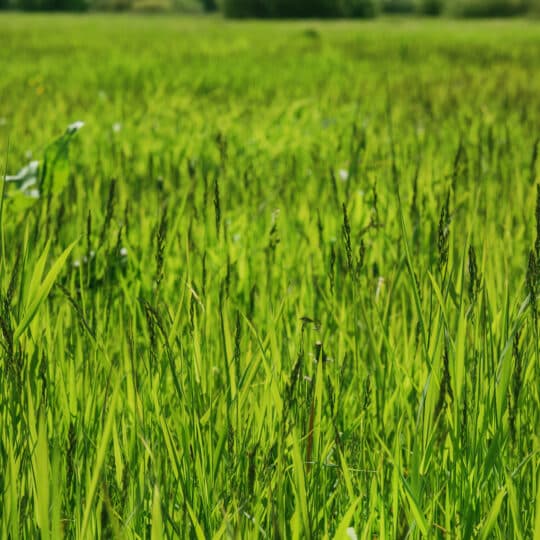The Difference Between Cool and Warm Season Grass
Which is Better for Your Lawn?
Posted
February 22, 2024

When it comes to maintaining a lush lawn, the type of grass you choose is important. Cool and warm season grass are the two main categories to choose from. It depends on where you live and what you want out of your grass to determine the best type for your lawn. Learn the differences between these two to help decide which is better suited for your yard.
Cool Season Grass
Like their name suggests, cool season grasses thrive in cooler climates. Regions with moderate temperatures, particularly during the spring and fall, will grow more varieties of Kentucky bluegrass, perennial ryegrass, fine fescue, and tall fescue. If you live in the northern regions of the United States, Canada, and Europe, you’re more likely to maintain a lush lawn with cool season grass. Here’s why.
- Growth Period: peak growth is during the cooler months of the year, typically in the spring and fall. It’s more likely to remain green during mild winters, depending on the weather.
- Appearance: when well maintained, you’ll notice a lush, green carpet-like lawn. Kentucky bluegrass is known for its fine texture and rich color.
- Drought Tolerance: while it can withstand periods of drought, cool season grass generally requires more water compared to warm season grasses, especially to maintain a vibrant appearance during hot summer months.
- Maintenance: requires more frequent mowing and fertilization compared to warm season grasses. Regular maintenance includes overseeding, aeration, and dethatching to keep grass healthy and vigorous.
Warm Season Grass
You guessed it, warm season grasses are well-suited to hot climates. Regions in the southern U.S. and tropics will have more Bermuda, Zoysia, St. Augustine, and Bahia grass that can survive the long, sunny days and warm temperatures.
- Growth Period: optimal growth happens during the hot summer months. They may go dormant and turn brown during cooler periods but are likely to recover once temperatures rise.
- Appearance: coarser texture compared to cool season grasses and may form dense, low-growing turf. It’s not as vibrant as cool season grass, but it can still create attractive lawns when properly maintained.
- Heat and Drought Tolerance: well-adapted to hot, dry conditions. It requires less water compared to cool season grasses and can maintain its color and vitality even during prolonged periods of drought.
- Maintenance: requires less frequent mowing and fertilization compared to cool season grasses. However, it still benefits from regular maintenance such as dethatching, aerating, and weed control.
Choosing Between Cool and Warm Season Grass
When selecting grass for your lawn, consider factors such as climate, soil type, sun exposure, and maintenance preferences. Now that you can make an informed decision on the type of grass you need, you can better maintain in a healthy, vibrant lawn year-round.

Download Your FREE Fall Recovery Guide
Summer’s extreme conditions can take a toll on your grass and its health. Take some time to learn how to bring your lawn back to life. This handy guide teaches you what needs to be done for a full fall recovery.